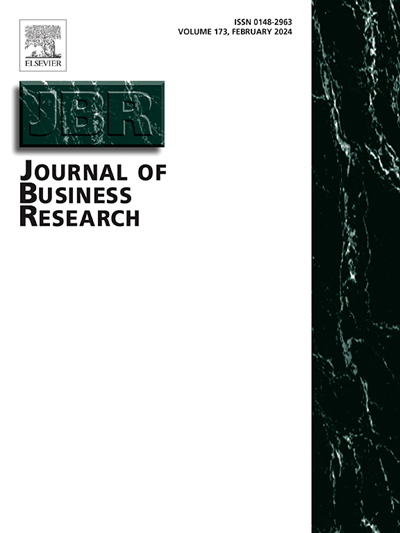我们是如何塑造可持续的“少买多买”的消费者偏好的
IF 9.8
1区 管理学
Q1 BUSINESS
引用次数: 0
摘要
快时尚的快速购买和丢弃循环是环境危害的主要驱动因素。一种很有希望的补救方法是推动消费者倾向于“少买,多买”(BLBP),即购买少量的高端产品,而不是购买许多中档产品。通过四个实验,我们发现让消费者感受到自我超越的敬畏情绪会增强BLBP偏好。研究1建立了主要效应,研究2和研究3揭示了其机制:敬畏拓宽了消费者面向未来的时间视角,增强了消费者对可持续性的关注,进而促进了消费者对BLBP的偏好。研究3还通过使用令人敬畏的广告图像来转移偏好来证明管理相关性。最后,研究4确定了一个与提出的机制一致的边界条件:当中期选择被框架为可持续时,敬畏不再促进BLBP偏好。总之,这些发现将敬畏定位为一种独特的情感杠杆,可以通过将消费转向优质、持久的商品来减少浪费。本文章由计算机程序翻译,如有差异,请以英文原文为准。
How awe shapes sustainable “buy less, buy premium” consumer preference
Fast fashion’s rapid buy-and-discard cycle is a major driver of environmental harm. One promising remedy is to nudge consumers toward a “buy less, buy premium” (BLBP) preference—that is, purchasing a small number of high-end items instead of many mid-range alternatives. Across four experiments, we show that making consumers feel the self-transcendent emotion of awe strengthens BLBP preference. Study 1 establishes the main effect, then Studies 2 and 3 unpack the mechanism: awe broadens consumers’ future-oriented time perspective, heightening sustainability concerns, which in turn promote BLBP preference. Study 3 also demonstrates managerial relevance by using awe-evoking advertising imagery to shift preferences. Finally, Study 4 identifies a boundary condition consistent with the proposed mechanism: when mid-range options are framed as sustainable, awe no longer boosts BLBP preference. Together, these findings position awe as a distinctive emotional lever that can reduce waste by redirecting consumption toward premium, longer-lasting goods.
求助全文
通过发布文献求助,成功后即可免费获取论文全文。
去求助
来源期刊

Journal of Business Research
BUSINESS-
CiteScore
20.30
自引率
10.60%
发文量
956
期刊介绍:
The Journal of Business Research aims to publish research that is rigorous, relevant, and potentially impactful. It examines a wide variety of business decision contexts, processes, and activities, developing insights that are meaningful for theory, practice, and/or society at large. The research is intended to generate meaningful debates in academia and practice, that are thought provoking and have the potential to make a difference to conceptual thinking and/or practice. The Journal is published for a broad range of stakeholders, including scholars, researchers, executives, and policy makers. It aids the application of its research to practical situations and theoretical findings to the reality of the business world as well as to society. The Journal is abstracted and indexed in several databases, including Social Sciences Citation Index, ANBAR, Current Contents, Management Contents, Management Literature in Brief, PsycINFO, Information Service, RePEc, Academic Journal Guide, ABI/Inform, INSPEC, etc.
 求助内容:
求助内容: 应助结果提醒方式:
应助结果提醒方式:


